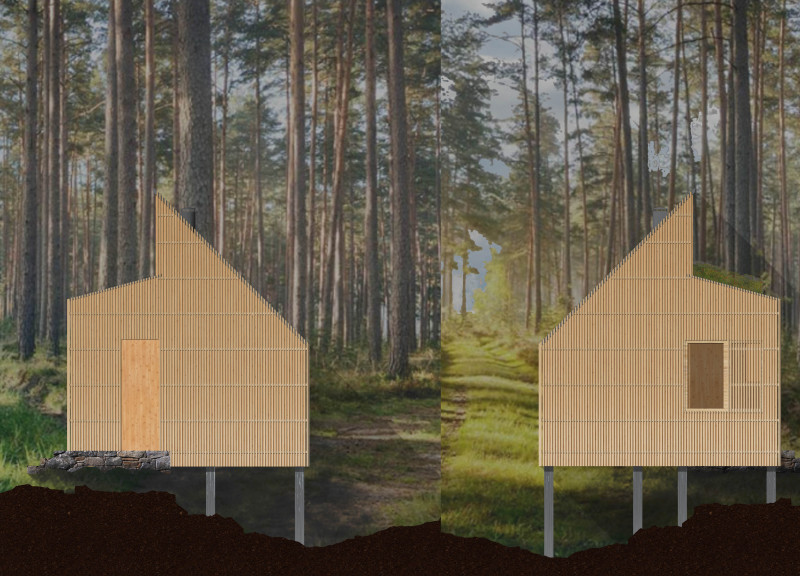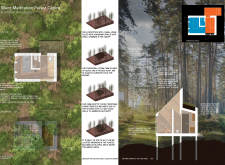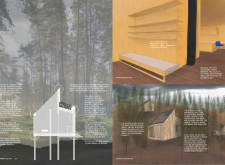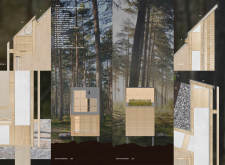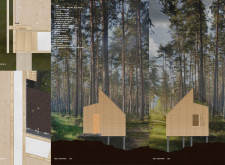5 key facts about this project
The Silent Meditation Forest Cabins project is an architectural endeavor that emphasizes a seamless integration of built structures within a natural forest setting. Focusing on sustainable living, these cabins are designed as retreat spaces for meditation and relaxation, aiming to foster a deep connection with the surrounding environment. The project reflects a commitment to ecological responsibility, using local materials and techniques that promote minimal disruption to the existing landscape.
Sustainable Approach to Design
This project stands out through its deliberate use of ecological principles. The cabins are constructed primarily from locally sourced timber, which supports both the regional economy and reduces transportation emissions. The incorporation of green roofs serves to enhance biodiversity, providing habitats for various species while also improving thermal performance. Large south-facing windows are strategically placed to maximize natural light and ventilation, reducing reliance on artificial heating and cooling systems.
The elevated design on stilts further minimizes site disturbance and adds to the adaptability of the structure in varying terrain. This approach ensures that the building maintains low environmental impact while offering functional living spaces. The placement of these cabins enhances the natural landscape, allowing occupants to immerse themselves in the tranquil atmosphere of the forest.
Innovative Use of Materials
The project showcases a unique selection of construction materials that reinforce its ecological ethos. Key materials include:
- Wood: Used extensively for structural and aesthetic components, providing natural insulation and a warm appearance.
- Cellulose: This insulation material enhances the thermal efficiency of the cabins, promoting energy conservation.
- Glass: Large windows promote daylighting, enhancing occupant connection to the outdoor environment.
- Green Roof Systems: Designed for biodiversity, these roofs contribute to insulation and stormwater management.
- Natural Finishes: Beeswax and similar treatments enhance the wood’s durability while maintaining its natural character.
Thoughtful Interior Design
The internal layout prioritizes flexibility and functionality in design. Features such as foldable furniture allow the cabins to accommodate both individual meditation and group activities. The simplicity of the interiors, combined with well-placed windows, fosters a calming atmosphere, essential to the retreat experience. Each cabin includes designated areas for relaxation, meditation, and basic amenities, ensuring occupants can comfortably engage with the space according to their personal needs.
The Silent Meditation Forest Cabins project stands as a model of environmentally-conscious architecture, providing a serene setting that encourages mindfulness and reflection. By merging innovative design with sustainable practices, this project offers valuable insights into how architecture can coexist with nature. For further details on the project’s architectural plans, sections, designs, and ideas, readers are encouraged to explore the project presentation, which provides an in-depth look into its development.


